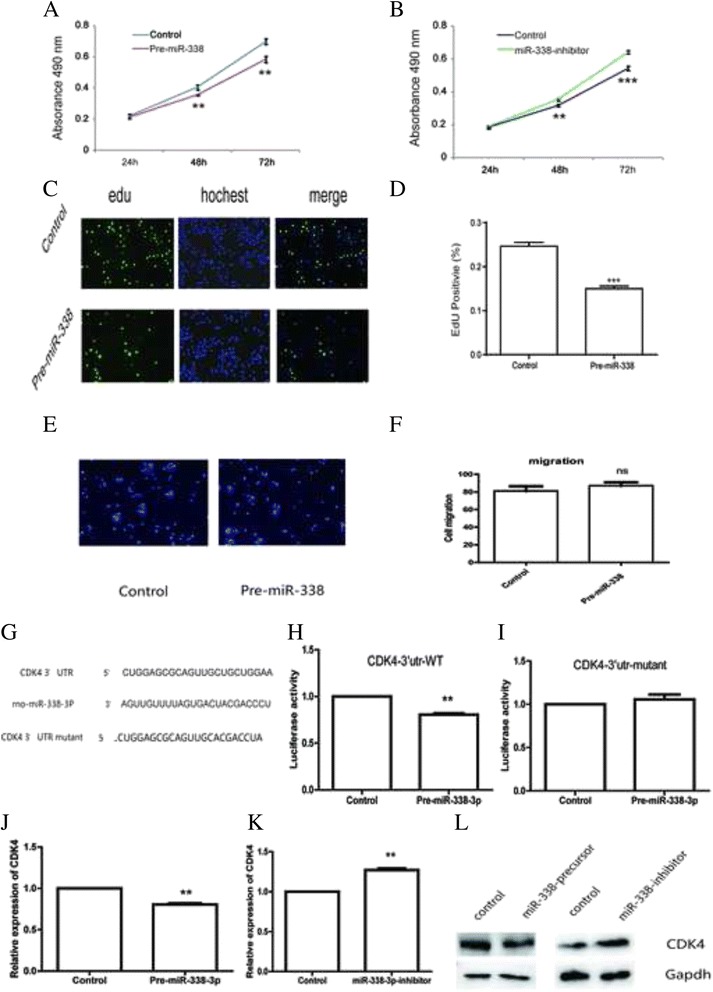Fig. 3.

miR-338-3p regulates cell proliferation and CDK4. a The proliferation analysis of HSC-T6 transfected with miR-338 precursor or negative control. Data shown are means ± SD (n = 3). **P < 0.01 versus the corresponding control. b The proliferation analysis of HSC-T6 transfected with miR-338 inhibitor or negative control. Data shown are means ± SD (n = 3). **P < 0.01 versus the corresponding control. c Micrograph of HSC-T6 transfected with miR-338 precursor. d Edu incorporation assay demonstrated that miR-338 precursor reduced the proliferation of HSC-T6. Data shown are means ± SD (n = 3). ***P < 0.001. e, f HSCs migration was measured by transwell assay. g The predicted sequence of binding region between miR-338-3p and CDK4. h Luciferase activity of CDK4 3’UTR WT reporter vector co-transfected with miR-338-3p. Data shown are means ± SD (n = 3). **P < 0.01. i Luciferase activity of CDK4 3’UTR mutant reporter vector co-transfected with miR-338-3p. Data shown are means ± SD (n = 3). j mRNA level of CDK4 in the HSCs transfected with Pre-miR-338-3p or negative control. Data shown are means ± SD (n = 3). **P < 0.01. k mRNA level of CDK4 in the HSCs transfected with miR-338-inhibitor or negative control. Data shown are means ± SD (n = 3). **P < 0.01. l The expression of CDK4 was restrained by miR-338-precursor, whereas recovered by miR-338 inhibitor
